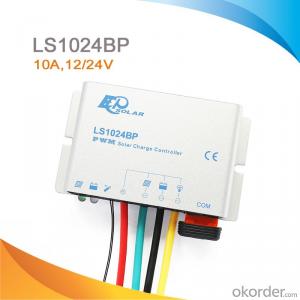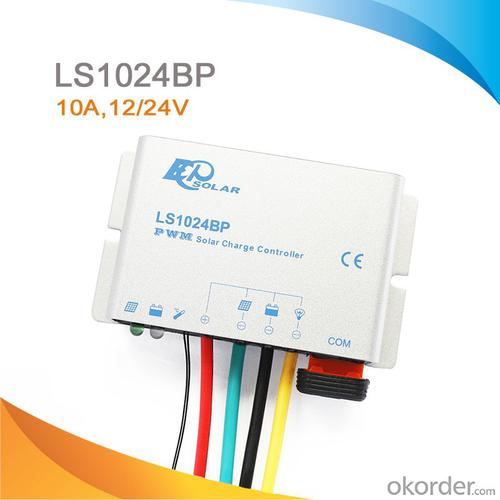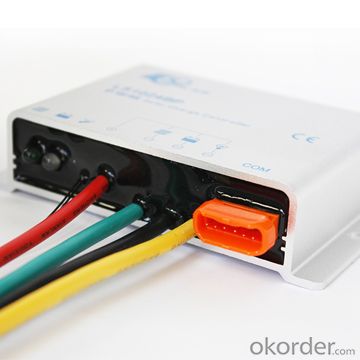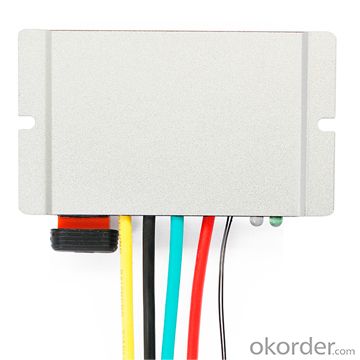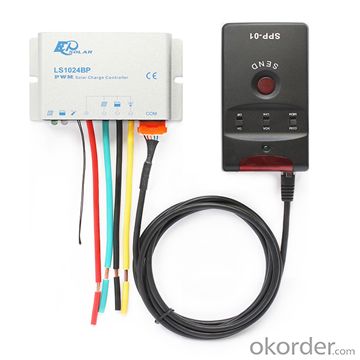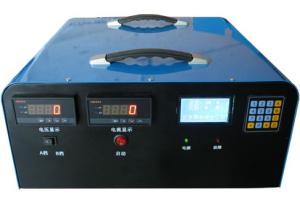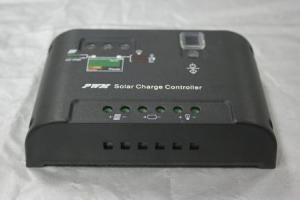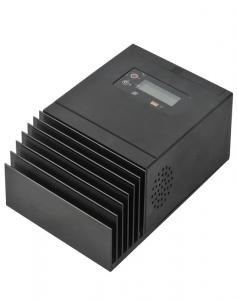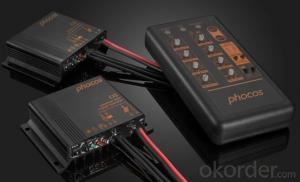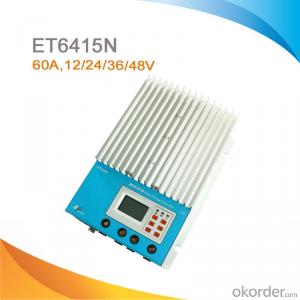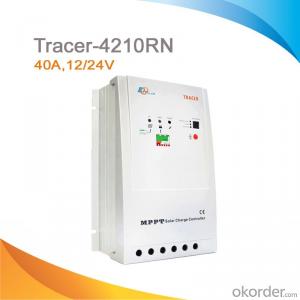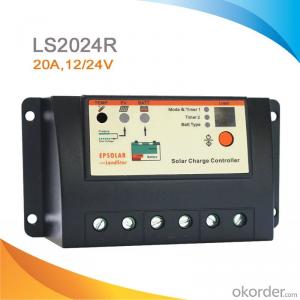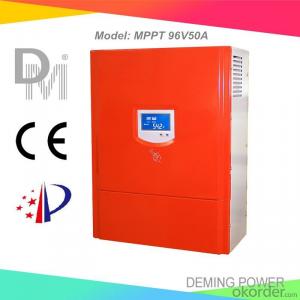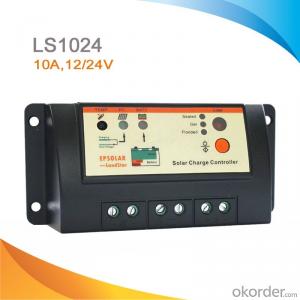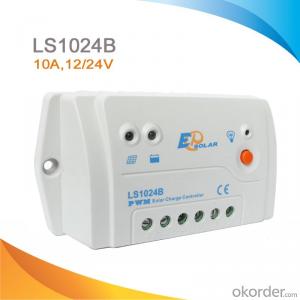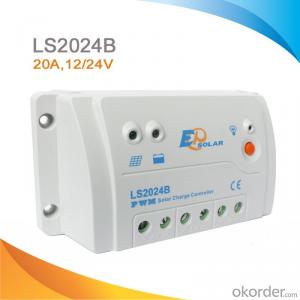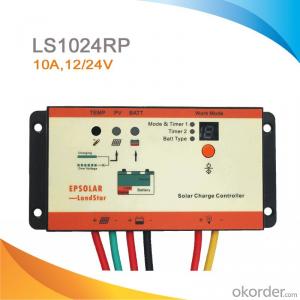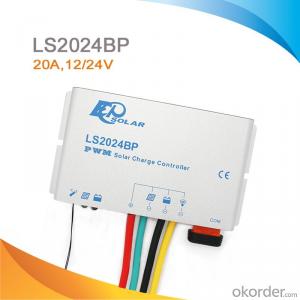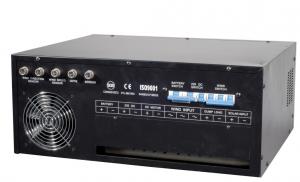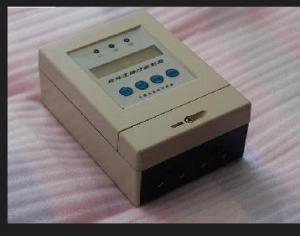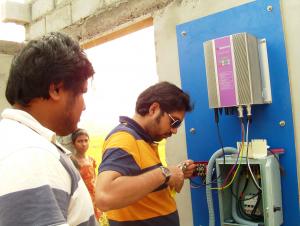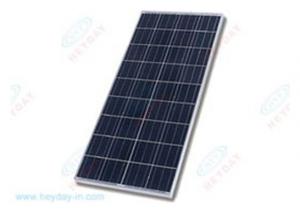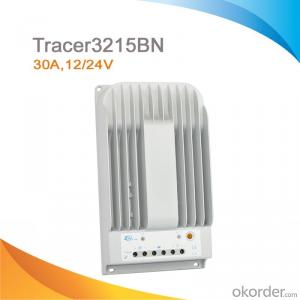Warterproof PWM Solar Charge Controller 10A,12/24V, LS1024BP
OKorder Service Pledge
OKorder Financial Service
You Might Also Like
Descriptions:
A charge controller, or charge regulator is basically a voltage and/or current regulator to keep batteries from overcharging. It regulates the voltage and current coming from the solar panels going to the battery. Most "12 volt" panels put out about 16 to 20 volts, so if there is no regulation the batteries will be damaged from overcharging. Most batteries need around 14 to 14.5 volts to get fully charged.
LandStar BPL series solar charge controller combines the solar charge controller and LED constant current driver into one unit which is ideal for solar LED Lighting, especially for the application for LED lamp which requires dimmer function. It can also reduce the system cost and increase the system flexibility.
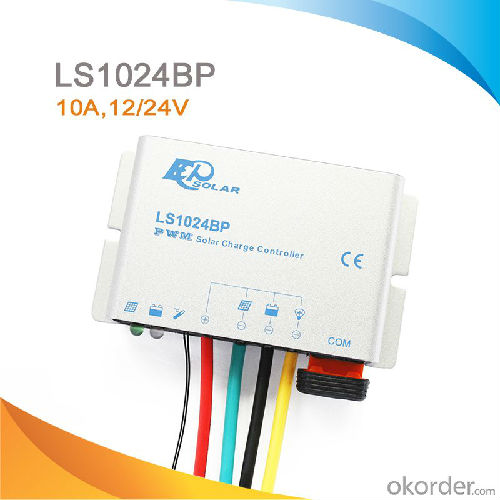
Features:
·12V/24V automatic identify or user-defined working voltage.
·High efficient Series PWM charging, increase the battery lifetime and improve the solar system performance.
·Use MOSFET as electronic switch, without any mechanical switch.
·Multiple load control modes, increase the flexibility of the load output
·Gel, Sealed, Flooded and user-defined battery type option.
·New SOC method of calculating accurately displays the available battery capacity.
·LandStar BP has no keys , The control function and the switch condition of the load can be modified by communication connection.
·Use of standard Modbus communication protocol for TTL-232 bus connections, communication protocol compatibility much better
·Support firmware upgrade
·Fully encapsulated PCB, IP67 protection
·Aluminumhousing
More powerful function via MT50 or PC
·Diversified load control modes : Manual, Light ON/OFF, Light ON+ Timer, Time Control
·Battery type selection: Gel, sealed, flooded and User type
·Real-time monitor
·Programmable parameters
·LVD or SOC load disconnect function
·Energy statistics function
Electronic Protections:
·PV array short circuit
·Over discharging
·Over charging
·Load overload
·Load short circuit
·PV reverse polarity
·Battery reverse polarity
·Overheating
Specification:
Electrical parameters | LS1024BP |
Nominal System Voltage | 12 / 24V auto work |
Rated Battery Current | 10A |
Maximum battery voltage | 34V |
Grounding | Common positive |
Self-consumption | 8.4mA(12V),7.8mA(24V) |
Temp. compensation | -3mV/℃/2V(25℃ ref) |
Equalize charging voltage | Sealed: 14.6V, Flooded: 14.8V, User-defined: 9~17V |
Boost charging voltage | Gel: 14.2V, Sealed: 14.4V, Flooded: 14.6V, User-defined: 9~17V |
Float charging voltage | Gel /Sealed /Flooded: 13.8V, User-defined: 9~17V |
Low voltage reconnect voltage | Gel /Sealed /Flooded: 12.6V, User-defined: 9~17V |
Low voltage disconnect voltage | Gel /Sealed /Flooded: 11.1V, User-defined: 9~17V |
Working temp. | -35℃~+55℃ |
Humidity | ≤95% (NC) |
Enclosure | IP67 |
Dimension | 108.5 x 64.5 x 25.6mm |
Terminal | 4mm2 |
Net weight | 0.4kg |
FAQ
The enclosure of charge controller:
If the controllers are used indoors or outdoors but with box, user can choose IP30 solar controller. For outdoor application, sometimes steam condenses to water when it touches a cold surface. And the water can come into controllers along with the wire. So it’s better to use high IP rating controller in humid area.
What is an IP rating?
IP (or "Ingress Protection") ratings are used to define levels of sealing effectiveness of electrical enclosures against intrusion from foreign bodies (tools, dirt etc) and moisture. The numbers that follow IP each have a specific meaning. The first indicates the degree of protection (of people) from moving parts, as well as the protection of enclosed equipment from foreign bodies. The second defines the protection level that the enclosure enjoys from various forms of moisture (drips, sprays, submersion etc).
- Q: What are the main components of a solar controller?
- The main components of a solar controller typically include a charge controller, which regulates the flow of electricity between the solar panel and the battery, ensuring the battery is not overcharged or damaged. Additionally, a solar controller may also have a load controller, which manages the flow of electricity from the battery to the connected load, such as lights or appliances. Some advanced solar controllers may also include features like LCD screens, voltage regulators, temperature sensors, and communication ports.
- Q: What is the maximum number of user profiles supported by a solar controller?
- The maximum number of user profiles supported by a solar controller can vary depending on the specific model and brand. However, most solar controllers typically support multiple user profiles, ranging from 2 to 10 profiles or more.
- Q: Can a solar controller be used with solar-powered indoor communication systems?
- Yes, a solar controller can be used with solar-powered indoor communication systems. A solar controller helps regulate and optimize the charging process of the solar panels, ensuring efficient power conversion and storage. Whether the communication system is installed indoors or outdoors, a solar controller is essential in managing the power supply and protecting the batteries from overcharging or discharging.
- Q: Can a solar controller be used with solar-powered indoor waste management facilities?
- Solar-powered indoor waste management facilities can indeed utilize a solar controller. This controller plays a vital role in solar power systems as it regulates the flow of electricity from the solar panels to the batteries. Its primary function is to ensure proper charging of the batteries and protect them from potential damage caused by overcharging or discharging. To implement a solar controller in a solar-powered indoor waste management facility, one would need to connect it to the solar panels installed on the facility's roof or surrounding areas. These panels capture sunlight and convert it into electricity, which can then be stored in batteries for later use. The solar controller would closely monitor the charging process, ensuring that the batteries are charged at the appropriate voltage to prevent any harm. It effectively manages the flow of electricity from the solar panels, optimizing the charging efficiency of the batteries and reducing reliance on grid electricity. By incorporating a solar controller, these facilities can significantly reduce their carbon footprint and operational expenses by utilizing renewable energy sources. Furthermore, it provides a reliable and sustainable power supply, even in areas with unreliable grid electricity. In conclusion, the inclusion of a solar controller is imperative for solar-powered waste management facilities. It allows them to harness the sun's energy efficiently, operate in an environmentally friendly manner, and achieve optimal performance.
- Q: Can a solar controller be used with a solar-powered industrial facility?
- Yes, a solar controller can be used with a solar-powered industrial facility. A solar controller is an essential component of a solar power system as it regulates the flow of electricity from the solar panels to the facility's equipment, ensuring efficient energy usage and preventing overcharging or damage to the batteries. It helps optimize the power generation and distribution process, making it suitable for use in large-scale industrial applications such as factories, warehouses, or manufacturing plants.
- Q: What is the maximum voltage that a solar controller can handle?
- The maximum voltage that a solar controller can handle depends on its specifications and design. Generally, solar controllers are designed to handle voltages ranging from 12V to 48V, with some models capable of handling higher voltages. It is important to consult the manufacturer's specifications or user manual to determine the specific maximum voltage rating for a particular solar controller.
- Q: How do I prevent short-circuiting with a solar controller?
- In order to avoid short-circuiting with a solar controller, there are several essential steps that can be taken: 1. Ensure proper wiring: It is important to securely tighten and insulate all wiring connections. Loose or exposed wires can increase the risk of short-circuiting. Using high-quality cables and connectors that are suitable for the current and voltage of your solar system is recommended. 2. Install fuses or circuit breakers: It is advisable to include appropriate fuses or circuit breakers in the positive and negative connections between the solar panels, controller, and battery bank. These protective devices will automatically disconnect the circuit in the event of a short-circuit, preventing any harm to the controller or other components. 3. Regularly maintain your system: Regularly inspect your solar system for any signs of wear, damage, or loose connections. Cleaning the panels to ensure maximum efficiency and removing any debris that could potentially cause a short-circuit is important. 4. Proper grounding: It is crucial to properly ground your solar system. This involves connecting the negative terminal of the battery bank to a grounding rod. Grounding helps dissipate any stray electrical charges and reduces the risk of short-circuiting. 5. Use a suitable solar controller: Ensure that the solar controller you select is appropriate for your specific solar system configuration and meets its maximum current and voltage requirements. Oversized or undersized controllers can increase the risk of short-circuiting. 6. Follow manufacturer guidelines: Always refer to the manufacturer's instructions and guidelines for your particular solar controller. They often provide specific recommendations and precautions to prevent short-circuiting and ensure the safe operation of your solar system. By following these precautionary measures, the potential for short-circuiting in your solar controller can be significantly reduced, ensuring the efficient and safe functioning of your solar power system.
- Q: What is the role of a solar controller in preventing battery overcharging?
- To prevent battery overcharging, the flow of electricity from the solar panels to the battery bank is regulated by a solar controller. When sunlight hits the solar panels, they produce electricity, which must be carefully managed to avoid overcharging the batteries. Acting as an intermediary, the solar controller, also referred to as a charge controller, monitors the voltage and current levels from the solar panels. It then adjusts these levels based on the battery's charge status. When the batteries reach full capacity, the solar controller restricts or completely stops the electricity flow from the panels to prevent overcharging. Overcharging the batteries can result in negative consequences such as decreased battery life, heightened maintenance needs, and potential safety hazards like explosions or fires. By preventing overcharging, the solar controller promotes the longevity and efficient operation of the batteries. Moreover, the solar controller may include additional features like temperature compensation. This feature adjusts the charging voltage based on the battery's temperature, further optimizing the batteries' performance and lifespan. In conclusion, the solar controller's main role in preventing battery overcharging is to regulate the flow of electricity from the solar panels to the batteries. This ensures the batteries are charged in the best and safest way possible.
- Q: How does a solar controller handle reverse polarity or incorrect wiring connections?
- Reverse polarity or incorrect wiring connections can be handled by a solar controller in several ways. Firstly, most solar controllers are equipped with protective measures such as fuses or circuit breakers. These safeguards prevent any harm to the controller or the connected solar panels in the event of reverse polarity or incorrect wiring. By disconnecting the charging circuit, these protective devices avert any potential electrical damage. Moreover, numerous solar controllers incorporate LED indicators or LCD displays to alert the user of any wiring issues. When reverse polarity or incorrect wiring connections are detected, these indicators or displays can present error codes or warning messages. This enables the user to promptly identify and resolve the wiring problem before any harm is done. In addition, modern solar controllers may feature safety functions like automatic shutdown or overload protection. These functions are specifically designed to safeguard the controller and connected devices. In the event of reverse polarity or excessive current flow caused by incorrect wiring, the charging circuit is automatically shut down. This effectively prevents any potential damage to the solar panels, batteries, or other connected devices. To sum up, a solar controller effectively handles reverse polarity or incorrect wiring connections through the implementation of built-in protection mechanisms, LED indicators or LCD displays for error notification, and safety features like automatic shutdown or overload protection. These combined features ensure the safe and efficient operation of the solar system, preventing any potential damage or electrical hazards.
- Q: Can a solar controller be used with solar panels of different technologies (monocrystalline, polycrystalline, thin-film)?
- Solar controllers are capable of being used with solar panels of various technologies, such as monocrystalline, polycrystalline, and thin-film. Their primary function is to regulate the battery charging process or the power output from the solar panels, thereby guaranteeing optimal performance and preventing overcharging. The compatibility of the solar controller with the voltage and current ratings of the solar panels being utilized is crucial for efficient and safe operation.
Send your message to us
Warterproof PWM Solar Charge Controller 10A,12/24V, LS1024BP
OKorder Service Pledge
OKorder Financial Service
Similar products
Hot products
Hot Searches
Related keywords
